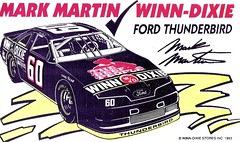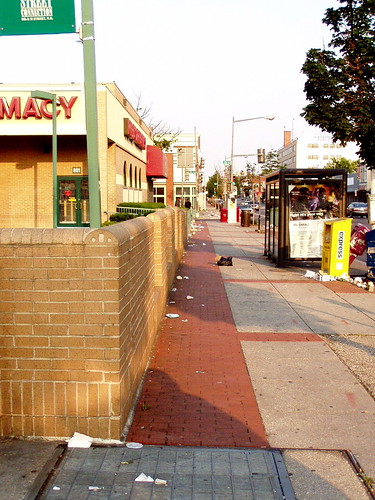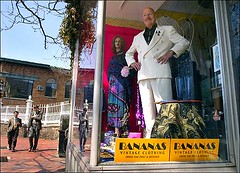Focus on what matters to the customer -- retail advice from the ashes of the Winn-Dixie bankruptcy
 All the marketing in the world won't matter if your product-value-service equation doesn't resonate with customers.
All the marketing in the world won't matter if your product-value-service equation doesn't resonate with customers.In this story, "Winn-Dixie files Chapter 11, other grocers on brink," from USA Today earlier in the year, Bruce Horovitz writes about the troubled supermarket industry. (I wrote about this in an email that I haven't blogged--basically the point is that supermarkets are being hurt from above--upscale markets like Whole Foods, Wegman's, etc.--and below--increasingly people are buying food at Walmart, as well as warehouse clubs like Costco, which mostly sell groceries.)
From the article:
The struggling supermarket industry has tossed an unsettling item into its own wobbly cart: bankruptcy. Winn-Dixie, a mostly Southern grocery chain that once ranked among the most profitable, filed for bankruptcy-court protection Tuesday and is expected to close a chunk of its 920 stores. "It's a broken, tired brand," says Jason Whitmer, analyst at FTN Midwest Research. (...)
[Winn-Dixie] CEO Peter Lynch says he plans to cut operating costs, improve merchandise, bolster customer service and generate "a sense of excitement in the stores."
But industry experts suggest it may take more. They say Winn-Dixie and other supermarket chains need to:
• Find a niche. No longer can supermarkets successfully be "all things to all people," says Solganik.
• Stop selling food as a commodity. Stores "that gear towards the new consumer are doing best," says Orgel.
• Develop strong store brands. Powerful signature items draw shoppers, Orgel says.
• Sell ethnic foods. Hispanic and Asian foods now have broad cultural acceptance, says Tara Weiner, who spots consumer trends at Deloitte & Touche.
• Stay nimble. A grocer has to stay current, says Solganik. "Winn-Dixie found a spot and never budged from it."
• Keep stores sparkling. "It's amazing how the cleanliness of the floor will determine if someone shops in the store," Solganik says.
_________________________
These points make sense regardless of your retail category. Independent retailers need to be distinctive and respond to changes in the market, and be clean, etc., in order to compete with national chains. National chains set the bar of expectations on the part of consumers.
 "Looking like hell" probably isn't a successful position to use as a way to differentiate your store from the competition. (Photo by Elise Bernard.)
"Looking like hell" probably isn't a successful position to use as a way to differentiate your store from the competition. (Photo by Elise Bernard.) "Art of Window Dressing." Richard Leonard stood in one of his funky window displays, which are now an exhibit at the Cape Ann Historical Museum in Gloucester. (Boston Globe Staff Photo / John Tlumacki)
"Art of Window Dressing." Richard Leonard stood in one of his funky window displays, which are now an exhibit at the Cape Ann Historical Museum in Gloucester. (Boston Globe Staff Photo / John Tlumacki)



0 Comments:
Post a Comment
<< Home